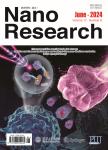Review Article Electrocatalysts in lithium-sulfur batteries
作者机构:Key Laboratory of Green Fabrication and Surface Technology of Advanced Metal Materials&Low-Carbon New Materials Research Center&School of Materials Science and EngineeringAnhui University of TechnologyMaanshan 243002China Department of Polymer Science and EngineeringShanghai Key Laboratory of Electrical Insulation and Thermal AgeingShanghai Jiao Tong UniversityShanghai 200240China Department of Mechanical and Aerospace EngineeringThe Hong Kong University of Science and Technology(HKUST)Clear Water BayHong KongChina
出 版 物:《Nano Research》 (纳米研究(英文版))
年 卷 期:2023年第16卷第4期
页 面:4438-4467页
核心收录:
基 金:supported by the Yong Scientific Foundation of Anhui University of Technology for Top Talent(No.DT2100000947) Natural Science Foundation of Anhui Province Education Commission(No.KJ2020A0269) the Scientific Research Foundation of Anhui University of Technology for Talent Introduction(No.DT19100069) the Yong Scientific Research Foundation of Anhui University of Technology(No.QZ202003)
主 题:lithium-sulfur batteries slow reaction kinetics polysulfide shuttling electrocatalysts electrochemical energy storage
摘 要:Lithium-sulfur(Li-S)batteries with the merits of high theoretical capacity and high energy density have gained significant attention as the next-generation energy storage ***,the main pressing issues of sluggish reaction kinetics and severe shuttling of polysulfides hampered their practical *** overcome these obstacles,various strategies adopting high-efficient electrocatalysts have been explored to enable the rapid polysulfide conversions and thereby suppressing the polysulfide *** review first summarizes the recent progress on electrocatalysts involved in hosts,interlayers,and protective ***,these electrocatalysts in Li-S batteries are analyzed by listing representative works,from the viewpoints of design concepts,engineering strategies,working principles,and electrochemical ***,the remaining issues/challenges and future perspectives facing electrocatalysts are given and *** review may provide new guidance for the future construction of electrocatalysts and their further utilizations in high-performance Li-S batteries.



